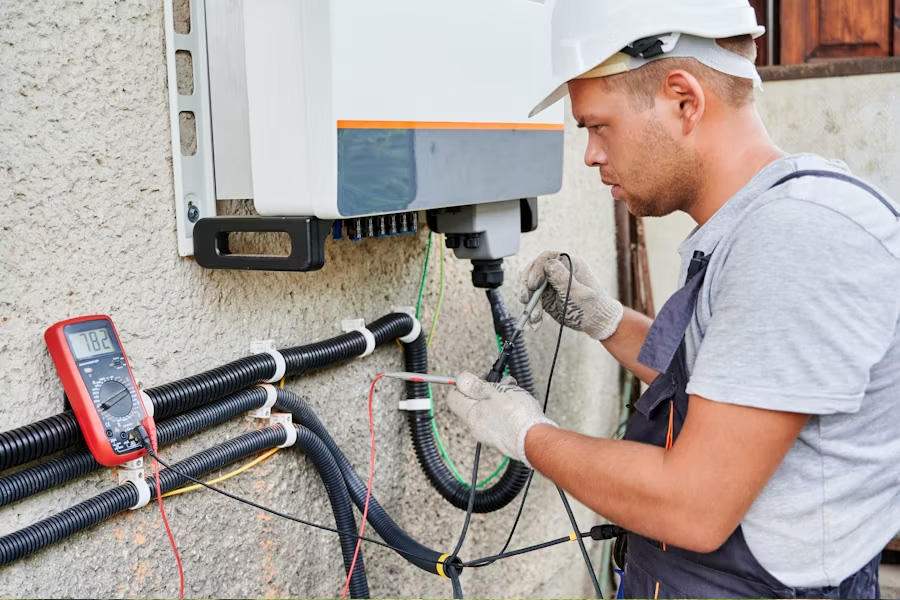
Image Source: unsplash.com
The Renewable Energy Skills Gap is no longer a distant policy worry, it is a present-day bottleneck. A shortage of technicians who can install and maintain solar, wind, and battery-storage systems is slowing projects from Cornwall to Caithness. A June 2025 global survey found that demand for green talent in the United Kingdom grew by 46 percent, yet supply inched up only 5.3 percent The Renewable Energy Institute. Without rapid, targeted training, the net-zero timeline will slip.
Why the gap matters more in 2025
Deloitte’s latest market outlook warns that clean-energy buildouts are colliding with “acute people constraints”, calling workforce readiness the sector’s critical success factor for the next five years Deloitte Italia. Grid operators are already stretching maintenance windows, and developers delay commissioning dates because qualified labour is scarce. Every unfilled job retards megawatts of new capacity.
Electricians sit at the centre of the solution
Renewable generation is electrical work at heart: stringing photovoltaic arrays, configuring inverters, balancing three-phase loads, integrating battery systems. That makes the licensed electrician the pivotal role. Yet many practitioners were trained before lithium-ion protocols, firmware updates, and high-voltage DC isolation became everyday tasks.
The fastest route to competence is a structured electrician course that mixes theory with rig-side practice. Short blocks on solar PV, energy-storage integration, and turbine servicing mean you stay billable while you learn. Courses should be mapped to updated national occupational standards so graduates walk away ready for site assessments, not just classroom quizzes.
Building on solid foundations: the role of the NVQ
Industry regulators still treat the nvq level 3 electrical as the baseline proof of competence. The portfolio confirms you can design, install, and certify to current wiring rules. By folding renewable tasks—such as inverter commissioning or battery isolation—into the evidence log, electricians complete the NVQ while gaining green-tech hours. That dual use shortens downtime and keeps learning costs low.
Three steps to shrink the Renewable Energy Skills Gap
Align training with real projects:
Course providers need to teach onlive or simulated arrays, not just slides. Students who crimp MC4 connectors, program MPPT controllers, and test isolation in a lab mirror the conditions they will meet on roofs and brownfields.
Blend formats for access:
Online modules deliver regulations and theory, practical days verify safe working at voltage. This structure means the learner spends less time off the tools.
Track outcomes, not just attendance:
Certifications should list the specific competencies gained, enabling employers to match skills to work packages.
Regulation are complex, but clarity on achieved outcomes helps both hiring managers and insurance auditors.
A call to action for employers and policymakers
- Invest in targeted upskilling now, before project pipelines stall.
- Partner with accredited centres that can prove learner competence on current technology sets.
- Support portable certification, so electricians can move from solar farms to battery hubs without duplicating coursework.
Where Elec Training fits
Elec Training designs short, employer-friendly pathways that bolt renewables content onto existing electrical qualifications. Tutors with field experience guide learners through PV string calculation, battery system fault-finding, and grid-code compliance, all in facilities that mirror site conditions.
If your team needs fast, credible progress, book a discovery call today. Our advisers will match the right electrician course to your business goals, confirm any prerequisites, and reserve seats in the next cohort.
Electricians who close their own knowledge gaps close the national Renewable Energy Skills Gap at the same time. Upskilling now protects margins, advances the net-zero mission, and secures a resilient career path. Elec Training stands ready to help you move first.







